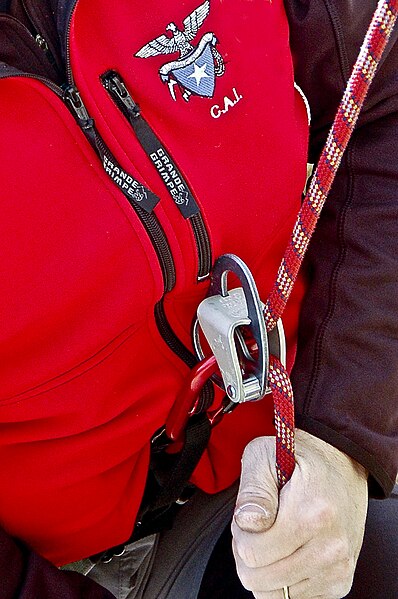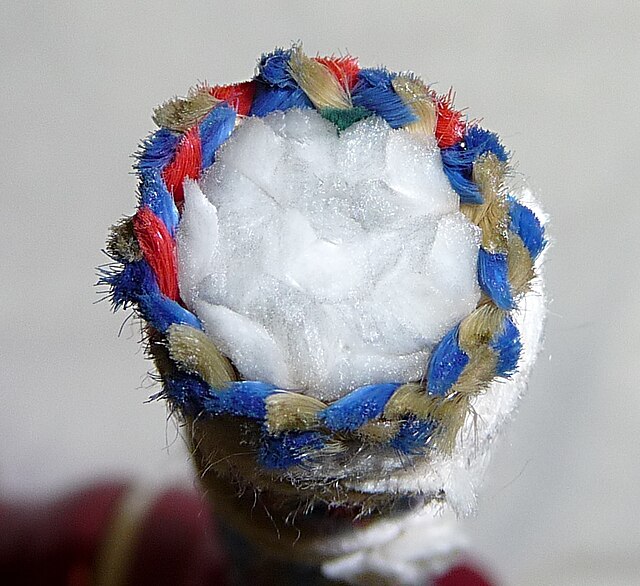In climbing and mountaineering, the term belaying refers to techniques used to create friction within a climbing protection system, particularly on a climbing rope, so that a falling climber does not fall very far. A climbing partner typically applies tension at the other end of the rope whenever the climber is not moving, and removes the tension from the rope whenever the climber needs more rope to continue climbing. The belay is the place where the belayer is anchored, which is typically on the ground, or on ledge but may also be a hanging belay where the belayer themself is suspended from an anchor in the rock on a multi-pitch climb.
A demonstration of the belay device with rope and carabiner without a proper locking gate
Belay device held in the "locked off" position.
Leader and belayer climbing in Joshua Tree National Park
Lead climber and belayer (in a hanging belay position) on the multi-pitch El Niño 8b (5.13d), El Capitan
Rock-climbing equipment varies with the type of climbing undertaken. Bouldering needs the least equipment outside of shoes and chalk and optional crash pads. Sport climbing adds ropes, harnesses, belay devices, and quickdraws to clip into pre-drilled bolts. Traditional climbing adds the need for carrying a "rack" of temporary passive and active protection devices. Multi-pitch climbing adds devices to assist in ascending and descending fixed ropes. And finally aid climbing uses unique equipment.
UIAA-certified twin ropes
Cross-section of 10.7 mm kernmantle dynamic rope
Sets of sewn webbing slings
Rope (two on left) and cord (two on right) thicknesses compared








